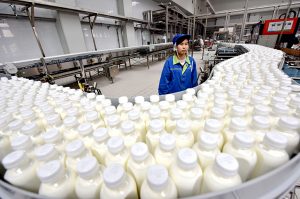
That’s according to leading Dairy Australian analyst John Droppert who says one of the key drivers is the way the La Nina is playing out in the northern and southern hemispheres.
DA’s September Situation and Outlook report shows milk production is likely to remain stable this season, with farmgate prices remaining high.
The report forecasts a smaller global milk pool due to droughts, high input costs and farm exits in the northern hemisphere, which may offer opportunities for Australian exporters.
“High farmgate prices mean most farmers are currently making good profits,” Mr Droppert said.
“In the coming season, farmers will need to manage these high prices against labour shortages and relatively high input costs.
“In addition, increased precautions and contingency planning are being implemented by many farmers to safeguard them against the elevated risk of Foot-and-Mouth disease and Lumpy Skin Disease.”
He said the likely emergence of a rare, third consecutive La Nina event, as forecast by the Bureau of Meteorology, added another “level of intrigue”.
While that might mean good rainfall for some, it also carried the threat of more flooding, Mr Droppert said.
But it could also mean an increase in homegrown feed production, reducing the need for high-priced inputs.
European drought
The report found large parts of the European Union remained in drought, with milk production tracking 0.5 per cent below last year.
The most recent European Commission forecast anticipated a 0.6pc drop in production for the full 2022 calendar year.
Milk prices in the EU were also at record levels, but dry conditions through the northern hemisphere spring and summer had reduced pasture quality and availability.
High prices for purchased feeds had discouraged their use.
The Commission expected cow numbers across the bloc would continue to fall – not least due to the emergence of greenhouse gas emissions policies in key milk producing member states, such as Ireland and the Netherlands.
Conditions were also dry in the western United States (US), with California in particular entering a new phase of ‘exceptional drought’ conditions.
Nonetheless, milk production across the US returned to growth in June, with an increase of 0.2pc compared to June 2021.
“Cow numbers were still down almost 1pc on the same time last year, but the herd was now expanding, giving the United States Department of Agriculture (USDA) confidence to tweak the 2022 calendar year outlook upwards, anticipating growth of 0.2pc, relative to 2021,” the S&O report summary said.
New Zealand ‘complicated’
New Zealand was entering a new season with high farmgate prices but medium-term constraints were likely to discourage overall industry expansion.
Individual farms might see an increase in production this season, if pasture conditions allowed.
Local analysts describe New Zealand’s experience of La Nina to be in the form of a wet spring and drier than average summer, both of which complicated the pasture management task for farmers.
With early signs that pasture growth was sluggish, high fertiliser and supplementary feed prices, combined with the threat of a tightening regulatory environment, meant the 2022/23 New Zealand season looked ‘complicated’.
There was a forecast of a 1.9pc reduction in overall milk intakes, which would constitute a second season of contraction following the 4.2pc drop of 2021/22.
Australia’s milk production concluded the 2021/22 season down by a similar proportion, almost 4pc compared with the 2020/21 year.
The report found significant concern among Australian farmers around high input costs and crippling staffing challenges have carried through to the new season, as have unseasonably wet conditions across large areas of Queensland and New South Wales.
The report found the high likelihood of a third consecutive La Nina would be unwelcome news in these regions, and its eventuality would likely bring challenges for the upcoming harvest period across both northern and southeastern Australia.
On the flip side, the characteristic increased rainfall associated with La Nina also held potential for gains in pasture growth and homegrown feed production for many dairy regions.
This could reduce reliance on highly priced feed inputs, and cushion farmers against the unpredictability of grain and fertiliser markets, which were at the whim of global influences.
It would also contribute to a promising outlook for irrigation water availability.
The Australian domestic dairy market remains characteristically more stable than the international commodity scene.
“Nonetheless, amid the complexity lies significant opportunity,” the report said.
“With two seasons of positive margins behind them, Australia’s dairy farmers are as well placed as any to capitalise.”
























